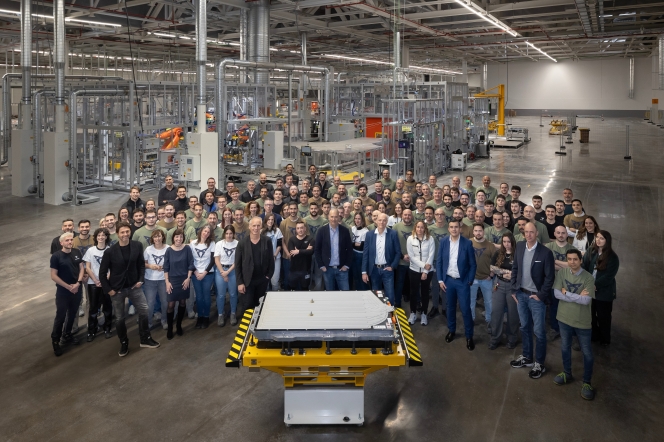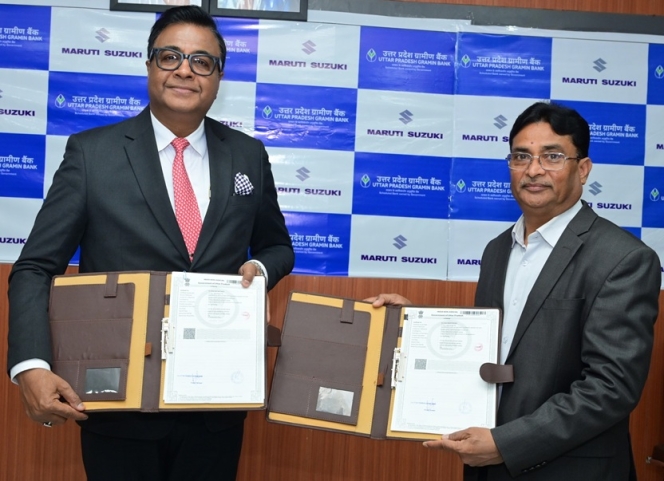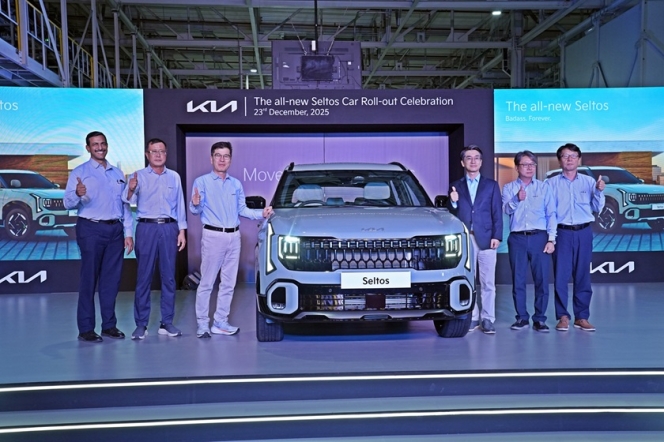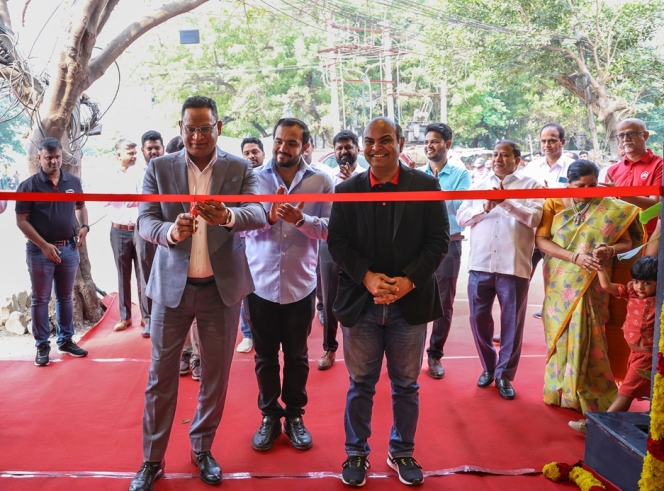SEAT Ramps Up EV Ambitions At Martorell With Battery Assembly And Stamping Milestones
- By Gaurav Nandi
- May 23, 2025

SEAT S.A. is accelerating its transition to electric mobility, hitting key milestones at its Martorell facility that signal growing momentum in the company’s EV strategy. In a critical year for its electrification push, the Volkswagen Group unit has begun pre-series assembly of battery systems and produced its first body panels for the CUPRA Raval using a next-generation press line.
The Spanish automaker, tasked with leading the development and production of the Volkswagen Group’s Electric Urban Car family under the Brand Group Core umbrella, is laying the groundwork for full-scale production of two compact EVs set to roll off the Martorell line starting in 2026.
“The assembly of the first battery systems in our new plant and the production of body parts on the new PXL press for the future electric models we will manufacture in Martorell is a key milestone in our electrification process,” highlights Markus Haupt, Interim CEO of SEAT and CUPRA and Executive Vice-President for Production and Logistics at SEAT S. A. “This is a decisive year, as we continue to prepare for the start of series production of the Brand Group Core’s Electric Urban Car family in 2026, starting with the CUPRA Raval, with the vision of leading electromobility in the Iberian Peninsula.”
Battery Assembly Line Powers Up
SEAT has initiated pre-series battery assembly at its newly constructed plant in Martorell, less than 18 months after breaking ground. The facility marks a Euro 300 million investment spanning 64,000 square meters and is poised to deliver up to 300,000 battery systems annually once fully operational.
Initially combining manual labour with automated systems, the battery line will transition to fully robotised production supported by a 500-strong workforce. A 600-meter conveyor bridge is under construction to link the battery facility to the main assembly line, enabling real-time, automated battery transfers and streamlining logistics.
The plant will supply energy storage units exclusively for the CUPRA Raval and the production version of the Volkswagen ID.2all, both built on VW’s MEB platform and slated for assembly at Martorell. SEAT expects the local battery production to enhance cost-efficiency and reduce carbon emissions across the supply chain.
Advanced Stamping Ushers in New Era of Production
Alongside battery progress, SEAT has launched pre-series production of body parts for the CUPRA Raval using its new PXL press, a high-speed stamping line capable of 15 strokes per minute and up to 4 million components annually. The press, operational since 2024, underscores SEAT’s drive to modernise Martorell as it evolves into a smart, connected and sustainable EV manufacturing hub.
The PXL press line is central to SEAT’s broader industrial transformation, enabling faster, more precise production of large metal components and bolstering the facility’s readiness for volume EV production starting in 2026.
Citroen India Delivers 51 C3 CNG Vehicles To Luthra Group
- By MT Bureau
- December 24, 2025
Citroen India, in partnership with its dealership La Maison Nanavati, has completed the handover of 51 Citroen C3 CNG vehicles to the Luthra Group. The ceremony took place at the Luthra Group’s headquarters in Surat.
The delivery is part of Citroen's strategy to expand its presence in tier-II and tier-III markets by providing mobility solutions to businesses and individuals.
The Citroen C3 CNG is designed for high-usage environments and daily commutes. The model includes several features tailored for the Indian market, integration of a factory-fitted CNG kit to manage running costs. A suspension system tuned specifically for local road conditions. Provisions for cabin space and air-conditioning systems designed for high-ambient temperatures.
The handover to Luthra Group represents the brand's focus on cost-efficient transportation. By targeting the regional business sector, Citroen India aims to strengthen its footprint in Gujarat and the broader Indian mobility market.
The C3 CNG is positioned as a solution for users requiring reliability and low operating expenses without compromising on ride comfort.
Maruti Suzuki India Partners Uttar Pradesh Gramin Bank For Retail Financing
- By MT Bureau
- December 24, 2025

Maruti Suzuki India has signed a Memorandum of Understanding (MoU) with Uttar Pradesh Gramin Bank, a regional rural bank, for vehicle retail financing partnership on new cars, pre-owned vehicles and commercial vehicles.
This collaboration marks the 50th retail finance partner for Maruti Suzuki India. The partnership is intended to use the bank’s network to provide credit options to a range of customer profiles, particularly in rural and semi-urban regions.
The partnership aims to increase the accessibility of Maruti Suzuki products through, tailored finance schemes designed for rural and regional customers.
Partho Banerjee, Senior Executive Officer, Marketing & Sales, Maruti Suzuki India, said, “Our partnership with Uttar Pradesh Gramin Bank marks a significant milestone as we onboard our 50th retail finance partner. This reinforces our commitment to making car ownership simpler and more affordable for customers across India. By expanding our reach through this strategic alliance, we aim to empower buyers with competitive, customer-friendly financing solutions that enhance the overall purchase experience. We remain focused on delivering seamless, tailored finance options, and this collaboration strengthens our vision of providing the Joy of Mobility to aspiring Indian consumers.”
Yadav S. Thakur, Chairman, Uttar Pradesh Gramin Bank, said, “At Uttar Pradesh Gramin Bank, empowering customer aspirations is at the heart of everything we do. Our partnership with Maruti Suzuki, a leader in the automotive industry, is a strategic step towards enhancing our service offerings and delivering greater value to our customers. This collaboration aligns with our 'Customer-First' mission, enabling us to provide accessible and affordable vehicle financing solutions. We look forward to helping more individuals and families across the country realise their dream of owning a Maruti Suzuki vehicle.”
Kia India Commences Production Of New Seltos In Anantapur
- By MT Bureau
- December 23, 2025

Kia India has started production of the latest generation Seltos at its manufacturing facility in Anantapur. The company has confirmed that prices for the mid-SUV will be announced on 2 January 2026.
The Anantapur plant, established in 2019, serves as a hub for both the Indian domestic market and international exports. The facility uses automation and a local workforce to manufacture the Seltos, which was the first model produced by the company in India.
The new model is built on Kia’s K3 platform, which has been engineered to increase structural rigidity and improve suspension damping. The vehicle has grown in size compared to its predecessor to increase cabin space and stability. It has 4,460 mm of length, 1,830 mm of width and a wheelbase of 2,690 mm.
The exterior design follows the ‘Opposites United’ philosophy, featuring a ‘Digital Tiger Face,’ LED projection headlamps, and alloy wheels with neon brake callipers.
The vehicle integrates several digital interfaces and driver assistance systems. It features an upgraded Kia Connect 2.0 suite with over-the-air (OTA) software updates and a proximity unlock function.
In terms of safety, it gets 24 features as standard, while ADAS Level 2 offers 21 autonomous features to assist the driver. The Kia Seltos SUV comes with three engine options – 1.5-litre Petrol producing 115 PS of power and 144 Nm of torque, 1.5 T-GDI Petrol producing 160 PS of power and 253 Nm of torque and a 1.5-litre diesel engine producing 116 PS of power and 250 Nm of torque.
Transmission choices include a 6-speed manual (6MT), intelligent manual (6iMT), IVT, 7-speed dual-clutch (7DCT) and a 6-speed automatic (6AT). The model will be sold in four trims – HTE, HTK, HTX and GTX – with additional option variants and an X-Line styling pack.
Gwanggu Lee, Managing Director & CEO, Kia India, said, “The roll-out of the All-New Kia Seltos marks a proud milestone for Kia India. Seltos has long set benchmarks in the mid-SUV segment, and this new generation represents a bigger, bolder, and more progressive evolution shaped by insights from Indian customers. With production now underway at our Anantapur facility, our teams are fully geared to ensure customers can take delivery of their all-new Seltos without long waiting periods. We are confident the all-new Seltos will once again redefine expectations in the segment and strengthen Kia’s leadership in India."
“The new Seltos looks fantastic. The Anantapur team, together with our supplier partners, have done an outstanding job in delivering our customers a great looking, significantly bigger, technologically progressive and safe vehicle with impressive functionality and connectivity,” he said.
- Citroen India
- Jeep
- Stellantis
- Citroen 2.0
- Shailesh Hazela
- Kumar Priyesh
- Sree Venkata Teja Kethineni
- VTK Automobiles
Citroen India Opens 126th Outlet In Chennai Under Citroen 2.0 Strategy
- By MT Bureau
- December 23, 2025

Stellantis-owned French automotive brand Citroen India has inaugurated its 126th point of sales and service (POS&S) facility in Chennai, continuing the expansion of its network under the ‘Citroen 2.0 – Shift Into The New’ strategy.
The new 3S (Sales, Service and Spares) facility is located at Chitlapakkam, near Chrompet. It is an extension of the partnership with VTK Automobiles, which now operates five Citroen touchpoints in the city. The outlet functions as a ‘Stellantis Brand House,’ allowing customers to access both Citroen and Jeep brands within a single space.
Since the announcement of the Citroen 2.0 strategy, the brand has increased its network by 48.6 percent. Over the last six months, the company added 43 points of sale through its network expansion programmes. Citroen expects to reach a total of 135 outlets by the end of the year, with further operations planned for the north, west, and east of India.
The strategy focuses on several pillars – deepening the domestic supply chain for India-centric products. Expanding the dealer footprint into Tier 2 and Tier 3 locations. Using digital tools and unified spaces for sales and aftersales services.
Shailesh Hazela, CEO and Managing Director, Stellantis India, said, “The expansion of Stellantis network further with VTK dealership in Chennai marks another important step in Citroen and Jeep India’s network growth strategy. Chennai is a key market for us, and this upgraded facility will enable us to serve our customers better with a seamless sales and ownership experience. Aligned with our Citroen 2.0 strategy, we remain committed to strengthening our dealer partnerships and building a robust, customer-centric network across the country.”
Kumar Priyesh, Director Automotive Brands, Stellantis India, said, “We have grown our network by almost 48.6 percent since we announced the Citroen 2.0 strategy and have been able to expand our operations in different parts of country: adding tier 2/3 locations while further strengthening in Metro/ Tier 1 cities. Through project Visitar, Network Expansion Program and expansion in new geographies we added over 43 POS in the last 6 months and are already in advanced stages to start additional operations in North, West and Eastern parts of the country and expected to close the year with 135 POS for Citroen.”
Sree Venkata Teja Kethineni, Dealer Principal, VTK Automobiles, said, “We’re happy to partner to this pivotal shift in automotive retail, proudly representing Jeep and Citroen. Our dual-brand strategy empowers us to deliver a truly elevated and distinctive experience – whether customers seek rugged performance or refined sophistication. With passion, professionalism and personalised care at the core, our team is committed to exceeding expectations and upholding the global standards these iconic brands represent.”
The facility includes a service centre equipped with diagnostics and digital tools. Staff members are trained across both Jeep and Citroen product lines to provide technical support and product information.






Comments (0)
ADD COMMENT